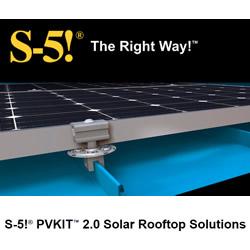New process for manufacturing PV cells means cheaper solar power
Chinese solar company opening local module factory in September
SolarCity pushing industry to 40% increase in useful lifetime of solar power installations
First Solar Achieves Yet Another Cell Conversion Efficiency World Record
Thin film perovskite solar cell passes the efficiency test
Cloaking Principle Could Boost Solar Cell Performance
SolarCity claims highest efficiency solar panel
Researchers develop cool way to improve solar cell efficiency
Solar windows can power buildings
Midsummer granted a loan of 10 MSEK from Almi for continued development of thin film solar cell production equipment
Silfab Solar Increases Module Production to 300 MW
Pink film 'antenna' can double solar cell efficiency
JA Solar Released New Double-glass Modules
LG And Borrego Solar Collaboration Expands To Bring More High-Efficiency Modules To U.S. Commercial Customers
26,000 aleo solar modules for SUNfarming solar park in Mecklenburg
Records 46 to 60 of 100
First | Previous | Next | Last
Featured Product

